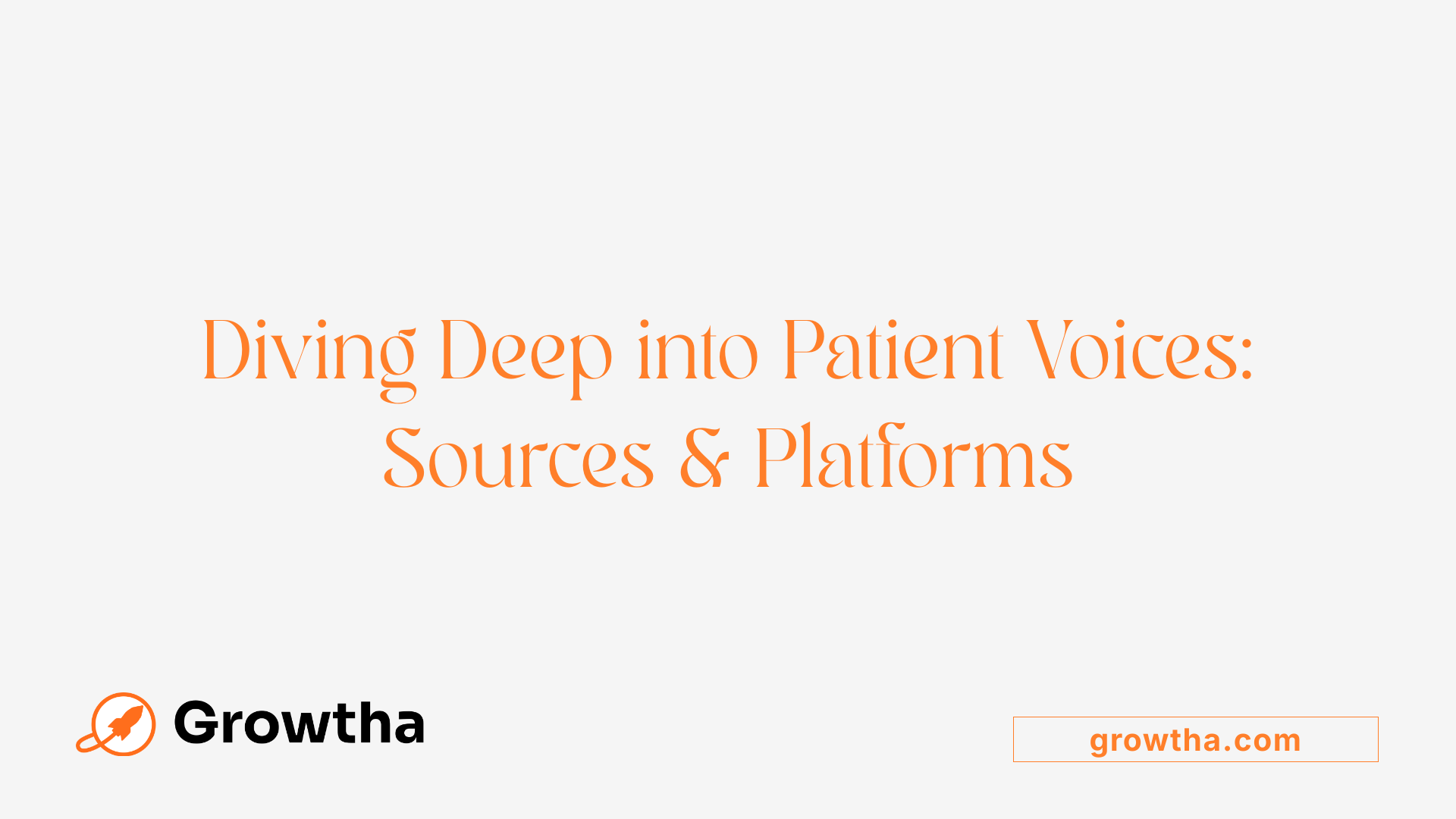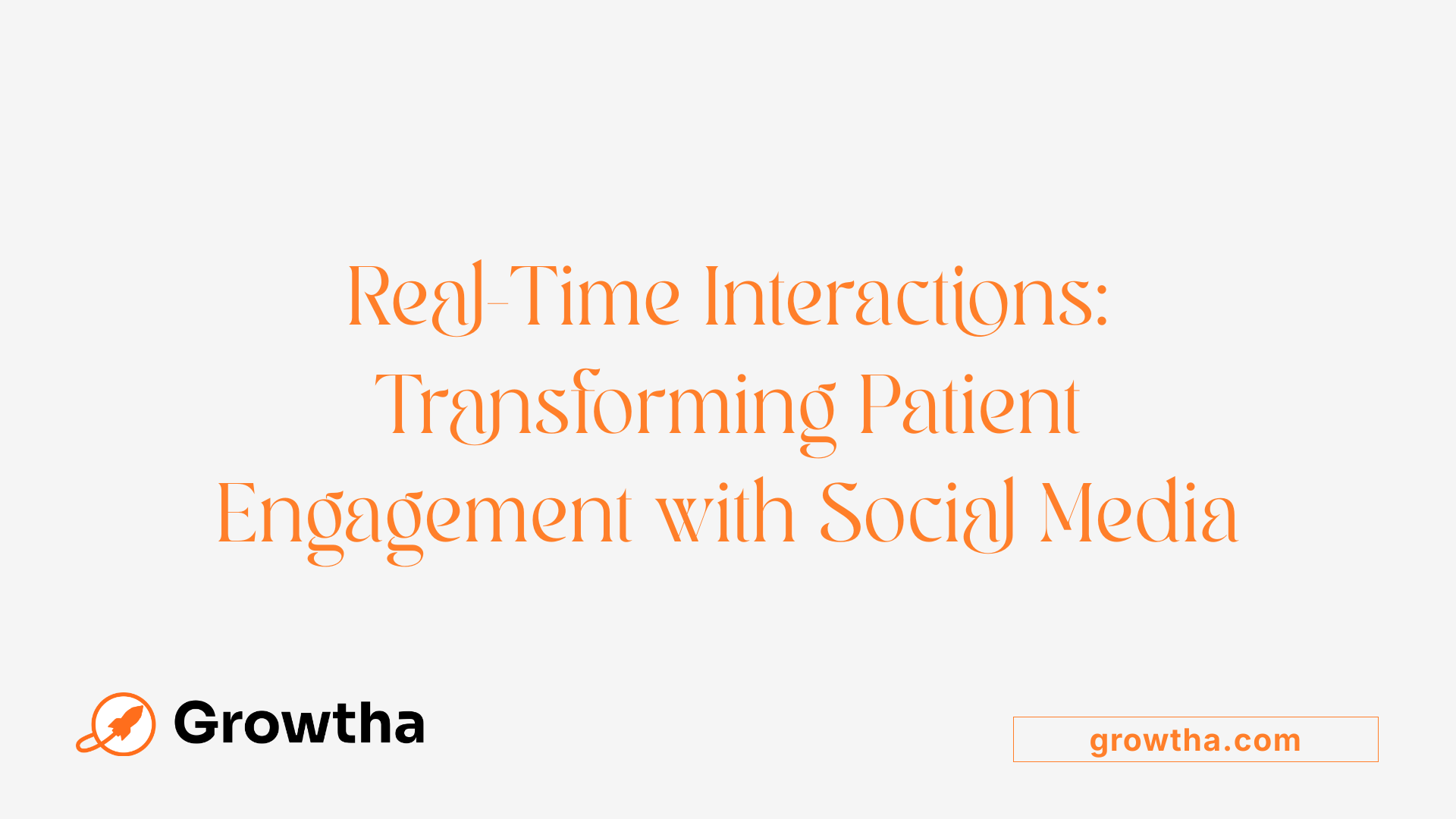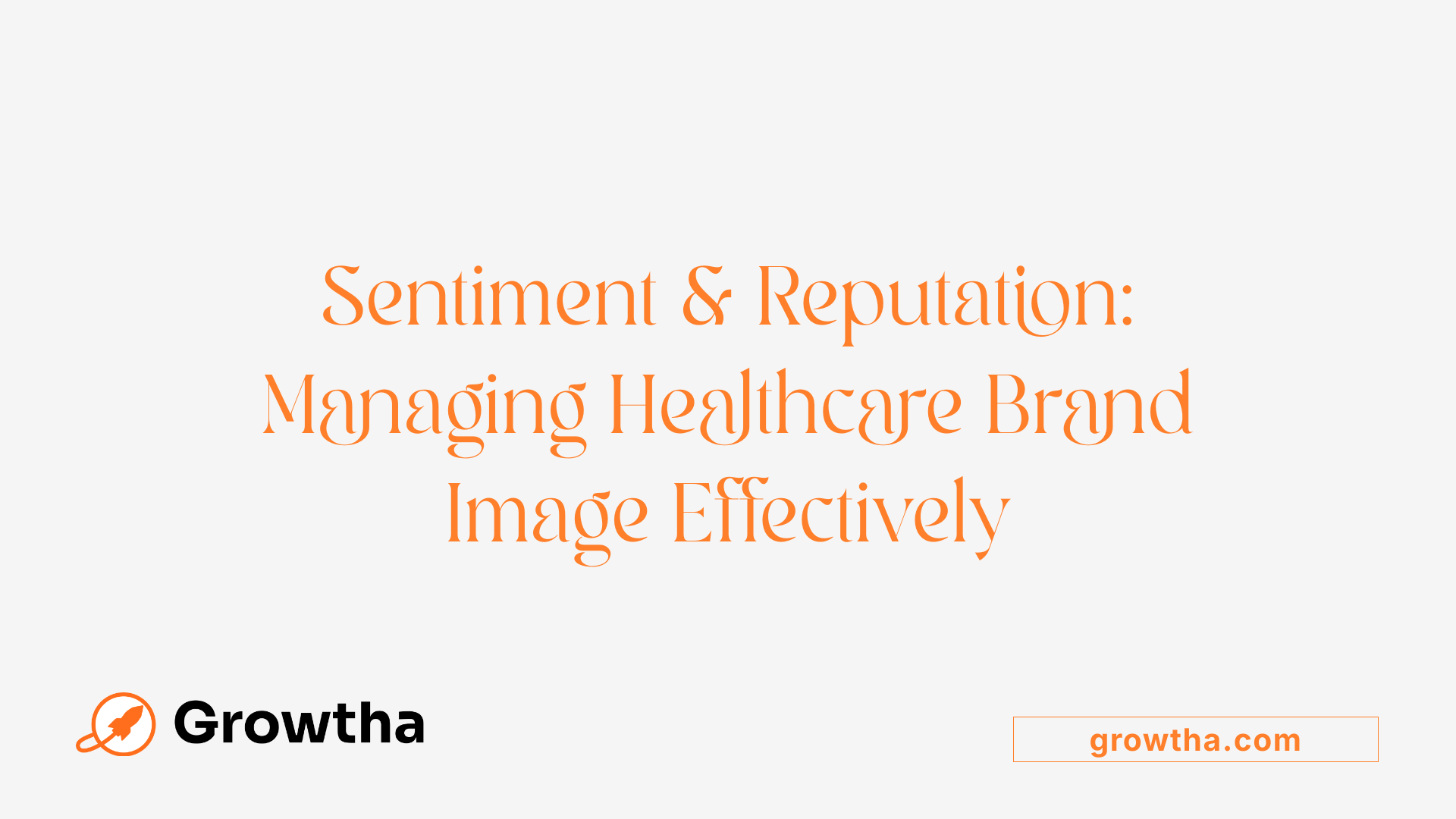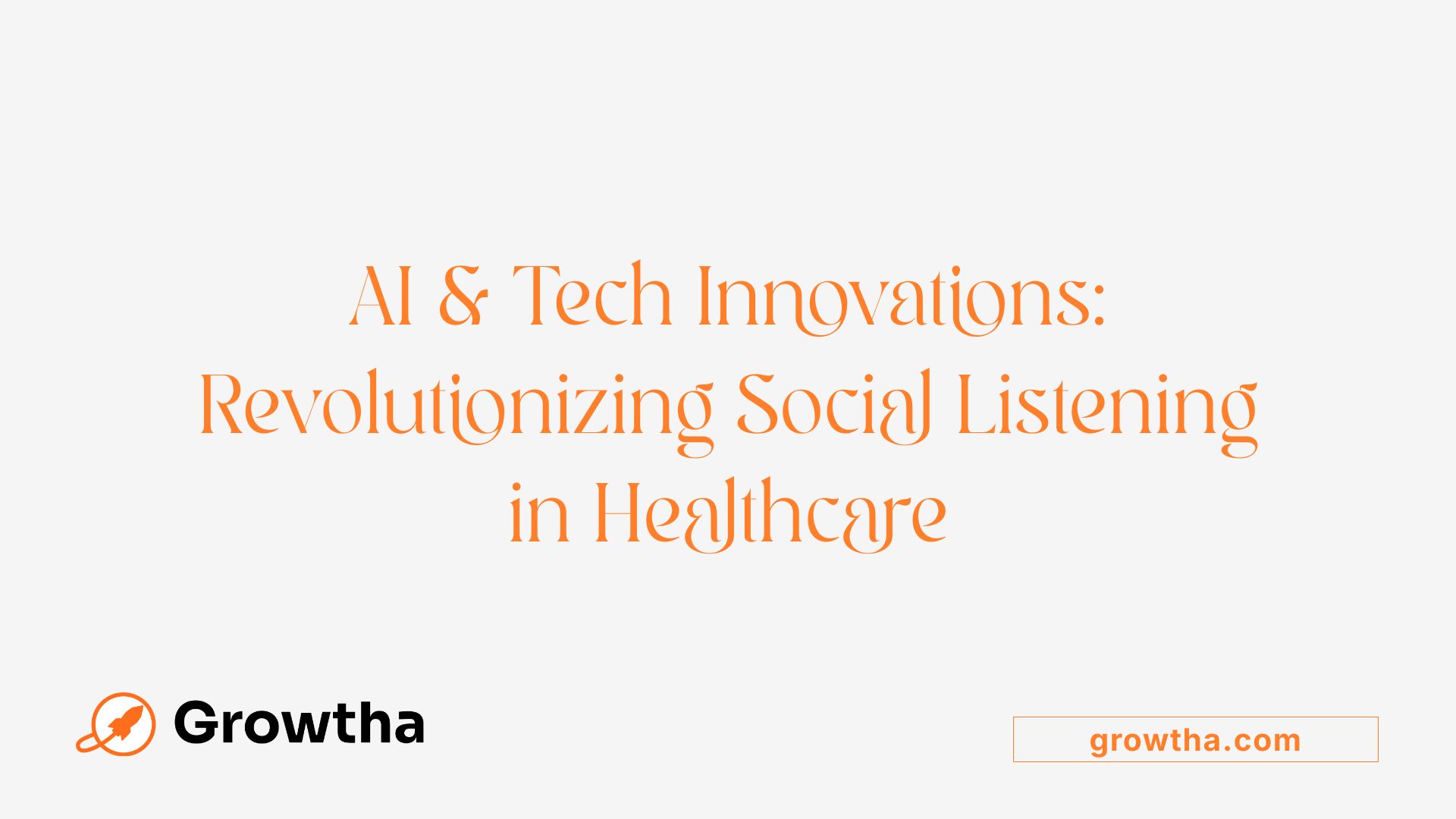How to Use Social Listening to Improve Patient Engagement
Harnessing Social Listening to Elevate Patient Engagement in Healthcare


How to Use Social Listening to Improve Patient Engagement
Introduction to Social Listening in Healthcare
In the digital age, social media has transformed the landscape of health communication, providing a dynamic platform for patients and healthcare providers to interact, share, and learn. Leveraging social listening enables healthcare organizations to tap into this vast reservoir of real-time patient insights, fostering deeper engagement, enhancing health literacy, and improving overall healthcare outcomes.
Understanding Social Listening and Its Role in Healthcare

What is social listening and how does it relate to patient engagement?
Social listening is the process of tracking and analyzing online conversations across various digital platforms to comprehend what is being shared about a brand, industry, or topical issues. This includes monitoring mentions, hashtags, keywords, and emerging trends, which helps organizations gather insights into sentiments, opinions, and concerns.
In healthcare, social listening plays a crucial role in patient engagement. By examining discussions among patients, caregivers, and communities, healthcare providers can better understand what matters most to their audiences—be it symptoms, treatment experiences, or health concerns. This understanding enables organizations to tailor their communication strategies, address patient needs proactively, and foster trust.
Unlike traditional feedback methods, social listening provides real-time insights and captures authentic patient voices. It helps in identifying emerging health issues, managing reputation, and improving overall service delivery. Overall, social listening transforms passive social media activities into a strategic tool for enhancing patient engagement and supporting better health outcomes.
Monitoring Patient Conversations for Authentic Insights

What are the sources of social media data?
Social media platforms serve as a rich source of unfiltered patient conversations, providing real-world insights into health experiences. These sources include public posts, comments, video content, and community discussions that reveal symptoms, disease trends, and treatment impacts directly from patients. Such data complements traditional research methods by capturing spontaneous patient voices.
Which platforms are commonly used for health conversations?
Healthcare organizations monitor popular social media sites such as Twitter, Facebook, Reddit, and YouTube. Each platform offers unique opportunities to observe patient interactions—Twitter for quick updates and trending health topics, Facebook for community support groups, Reddit for in-depth discussions, and YouTube for personal health stories and experiences.
How does social listening reveal unfiltered patient perspectives?
Social listening taps into these authentic conversations, providing organizations with insights into patients’ emotional states, frustrations, and unmet needs. It captures the true voice of patients, including symptoms they share spontaneously and their progression over time. For example, IQVIA utilized social listening to understand disease burden and to enhance healthcare professional education, demonstrating its practical value.
Why is capturing these insights important?
Unfiltered patient insights help bridge gaps in understanding, inform better healthcare strategies, and improve patient-centered care. They enable organizations to tailor content, address concerns more effectively, and identify areas for service improvement, ultimately fostering trust and better health outcomes.
Enhancing Patient Engagement Through Real-Time Feedback and Interaction

Why is the use of social media beneficial for patient engagement?
Social media has become an essential tool in healthcare because it bridges the gap between providers and patients with quick, accessible communication channels. Healthcare organizations can share health information, success stories, and updates about their services, fostering transparency and trust. Patients appreciate the ability to ask questions, receive support, and stay informed about their health condition in a familiar online space.
Additionally, social media enables the creation of supportive communities for individuals with similar health issues. Peer groups and patient advocacy pages offer emotional support, shared experiences, and advice, which can improve disease management and boost engagement.
Real-time feedback collection is another significant advantage. Healthcare providers can quickly respond to patient concerns, clarify misinformation, and tailor care strategies based on immediate patient input. This responsiveness enhances trust and demonstrates that patient voices matter.
Overall, social media nurtures a sense of community, improves health literacy, and encourages proactive participation in healthcare. By fostering strong online relationships, it helps build loyalty, advocate for better health decisions, and ultimately improve health outcomes.
Using Social Listening to Track Sentiment and Manage Brand Reputation

How do sentiment analysis techniques help in healthcare social listening?
Sentiment analysis involves using algorithms and natural language processing tools to interpret the emotional tone behind social media posts, comments, and discussions. Healthcare organizations utilize these techniques to gauge public opinion on their services, medical treatments, or health topics. This process helps identify whether patients and communities feel positively, negatively, or neutrally about specific issues. Advanced sentiment analysis can also detect nuanced emotions like frustration, anxiety, or trust, enabling more targeted responses.
How can healthcare organizations monitor their brand health?
By continuously tracking conversations related to their organization across multiple social media platforms, healthcare organizations can assess their overall reputation. Metrics such as share of voice, positive versus negative mentions, and engagement levels help organizations understand their standing within the community and industry. Visual tools like sentiment trend graphs show how public perception evolves over time, especially during health crises or after specific campaigns. This proactive monitoring allows organizations to address negative perceptions early and reinforce positive messaging.
How does social listening identify and address negative conversations?
Social listening tools can automatically flag negative comments or emerging complaints, enabling healthcare providers to respond swiftly and effectively. Addressing issues publicly can demonstrate accountability and commitment to patient care, helping to restore trust. Additionally, analyzing the context of negative sentiments uncovers underlying concerns that might not be immediately apparent. This insight guides organizational improvements, like adjusting communication strategies or service delivery, to better meet patient needs.
| Aspect | Technique | Purpose | Example |
|---|---|---|---|
| Sentiment Analysis | NLP algorithms | Gauge emotional tone | Tracking mood shifts during flu season |
| Brand Monitoring | Share of voice metrics | Measure visibility | Comparing hospital reputation across regions |
| Negative Conversation Detection | Automated alerts | Respond quickly to crises | Flagging patient complaints about wait times |
Social listening isn't just about tracking mentions; it involves delving into the 'why' behind conversations. These insights enable healthcare providers to enhance patient trust, improve services, and manage their reputation effectively. By leveraging real-time data, organizations can adapt strategies swiftly, foster community engagement, and uphold transparency in health communication.
Leveraging AI and Technology for Advanced Social Listening

How can AI technologies analyze social media data to provide deeper understanding?
AI-driven social listening tools are transforming how healthcare organizations interpret online conversations. These technologies analyze vast amounts of social media data to uncover insights that might be missed by manual review alone.
Through advanced algorithms, AI can detect the emotional tone of patient comments, tracking feelings like anxiety, satisfaction, or frustration. This real-time sentiment analysis helps organizations understand public perception and identify emerging issues quickly.
Moreover, AI identifies patterns and trends in discussions, such as rising symptoms, treatment concerns, or misinformation. This enables healthcare providers to respond proactively and tailor their communication strategies.
Workflow automation, powered by AI, includes chatbots that handle patient inquiries 24/7. These virtual assistants provide immediate, accurate responses, improving engagement and freeing staff for more complex tasks.
Platforms like Sprinklr leverage AI for multilingual support, analyzing conversations across over 30 social channels. They also benchmark a healthcare organization’s share of voice against competitors, revealing strengths and areas for improvement.
In summary, AI enhances social listening by delivering deep insights into patient sentiments, detecting subtle emotional cues, and guiding prompt, informed responses that improve patient trust and organizational reputation.
Best Practices in Implementing Social Listening Strategies
What are some best practices for leveraging social listening tools in healthcare?
Effectively harnessing social listening tools in healthcare begins with setting clear objectives aligned with organizational goals. These goals might include monitoring patient sentiment, tracking emerging health concerns, or evaluating the impact of public health campaigns.
Choosing the right channels and analytical tools is crucial. Healthcare providers should focus on relevant social platforms such as Facebook, Twitter, YouTube, and Reddit, based on their target demographics and the nature of the conversations.
Utilizing keyword tracking, hashtags, and industry-specific conversations helps in gathering meaningful data directly from patients and communities in their own words.
Regularly analyzing engagement metrics and sentiment trends enables organizations to respond promptly to patient feedback, especially negative comments, within an appropriate timeframe. This proactive approach enhances trust and boosts reputation.
Integrating insights from social listening with other data sources, like patient surveys or call center feedback, provides a comprehensive picture of patient needs and experiences.
A continuous process of measurement, review, and strategy refinement ensures that social listening efforts stay relevant and effective. This iterative approach contributes to improved healthcare service quality and higher patient satisfaction.
In summary, best practices involve clear goal-setting, thoughtful channel selection, consistent monitoring, and using insights to adapt healthcare services for better engagement and outcomes.
Real-World Examples and Success Stories
How can social listening influence healthcare organizational decisions?
Social listening has proven to be a powerful tool in shaping healthcare strategies and decisions. By actively monitoring patient conversations and public sentiment across social media platforms, healthcare organizations can make informed choices that directly impact patient engagement and organizational reputation.
One notable example is guiding hospital expansion. By analyzing social feedback, hospitals can identify underserved areas or rising health concerns within their communities. This helps them decide where to establish new facilities or services, ensuring they meet actual patient needs.
Another important application is tailoring health-related content. Healthcare providers use social insights to develop educational materials that resonate with current trending health issues or prevalent community concerns. For instance, during specific health campaigns like American Heart Month, social listening enables organizations to evaluate which topics generate the most engagement and adjust their messaging accordingly.
Sharing insights across departments is also facilitated through social listening. Marketing teams, clinical staff, and administration can all access real-time data to improve content, service delivery, and patient outreach strategies.
Monitoring campaign performance is crucial. Organizations track awareness efforts, assess sentiment trends, and measure overall influence—allowing for quick adjustments to optimize impact and reach.
Furthermore, social listening helps organizations understand their position relative to competitors. By comparing share of voice and engagement metrics, healthcare entities can identify areas for improvement, innovate service offerings, and differentiate themselves in a crowded healthcare landscape.
In summary, real-world applications of social listening include guiding hospital expansion, improving health education through targeted content, and tracking campaign effectiveness. These approaches help healthcare providers respond proactively to community needs, foster trust, and ultimately enhance health outcomes through data-driven decisions.
Challenges and Limitations of Social Listening in Healthcare
Content filtering
One of the main challenges in social listening within healthcare is filtering relevant content from the vast amount of data generated online. Not all conversations relate directly to health issues or patient experiences, so organizations need sophisticated tools to accurately identify meaningful insights. Over-filtering may cause important signals to be missed, while under-filtering can overwhelm teams with irrelevant information.
Language diversity
Social media platforms host conversations in multiple languages, reflecting diverse patient populations. This diversity complicates analysis, as natural language processing tools must be capable of understanding various languages, dialects, and regional expressions. Inadequate language support can lead to overlooked insights or misinterpretations.
Sarcasm and nuance
Detecting emotional tone and nuance, such as sarcasm or irony, remains a significant hurdle. Patients may express concerns or sentiments in subtle ways that automated systems struggle to interpret correctly. Misreading these cues can lead to inaccurate assessments of patient well-being or satisfaction.
Data privacy and ethics
Using social listening raises concerns about patient privacy and data ethics. Collecting and analyzing publicly available data must be balanced with respect for individual confidentiality and legal obligations. Healthcare organizations must ensure compliance with regulations like HIPAA and maintain transparency about their data practices while safeguarding sensitive information.
Overall, despite its potential, social listening in healthcare requires careful management to address these challenges effectively and ethically. Proper tools and policies help maximize the benefits while respecting patient rights.
Future Directions and Conclusion
Emerging advances in artificial intelligence are revolutionizing social listening in healthcare, enabling more sophisticated analysis of patient conversations. AI-powered tools now provide deeper sentiment analysis, detect nuanced emotions, and automate responses swiftly through chatbots. These innovations enhance real-time insights, allowing healthcare organizations to adapt quickly and personalize patient engagement.
Regulatory bodies such as the FDA, EMA, and MHRA recognize social media listening as a valuable method for collecting patient-experience data. They emphasize the importance of ethical data collection, transparency, and methodological rigor. As social listening becomes more integral to health research, clear guidelines are expected to shape its responsible use, ensuring it complements traditional research and supports regulatory decision-making.
Building a patient-centered communication ecosystem involves integrating social listening insights into broader health strategies. This means fostering transparent conversations, encouraging shared decision-making, and creating accessible, culturally sensitive information channels. By doing so, healthcare providers can empower patients, improve health literacy, and foster trust—ultimately shaping a more responsive and inclusive healthcare landscape.
Final Thoughts: Navigating the Future of Patient Engagement with Social Listening
Harnessing social listening thoughtfully and effectively positions healthcare organizations to deepen patient relationships, enhance health literacy, and foster trust in a rapidly evolving digital landscape. As technology advances and regulatory frameworks adapt, integrating innovative AI tools and patient-centered strategies will be pivotal in transforming healthcare communication, making it more responsive, personalized, and impactful for patients worldwide.
References
- How to Use Social Listening for Healthcare Organizations
- Patient Education and Engagement through Social Media - PMC
- Social Media Listening: The Power of Patient Voices in Transforming ...
- Leveraging Social Media Listening to Enhance Patient Engagement ...
- Social Listening: A Complete Guide for 2025 - Sprinklr
- Patient listening on social media for patient-focused drug development
- Leveraging Social Media for Patient Engagement and Outreach - Hyro
- Patient Education and Engagement through Social Media - PMC
- Social Media Listening: The Power of Patient Voices in Transforming ...







